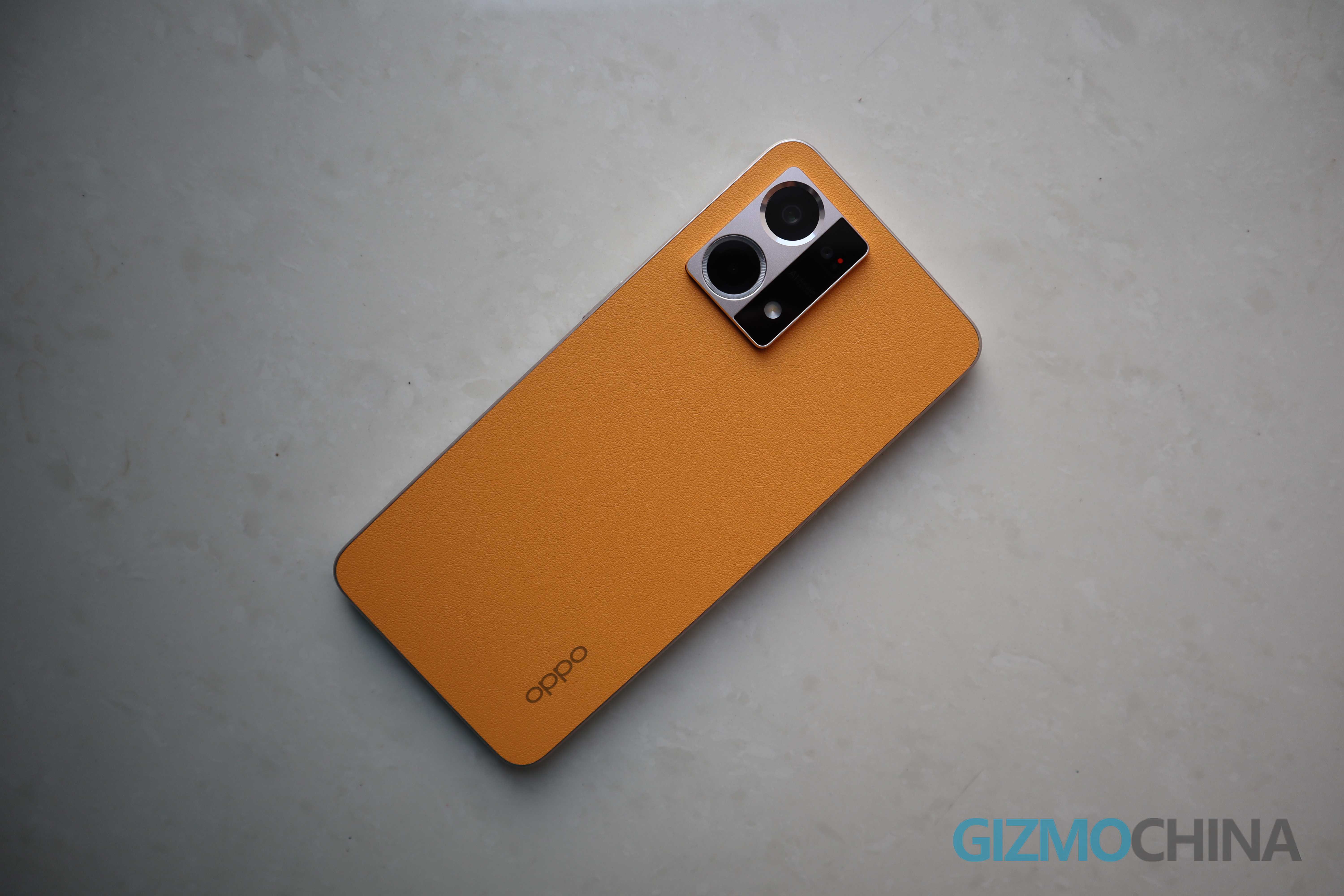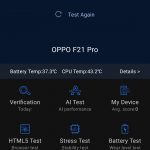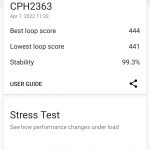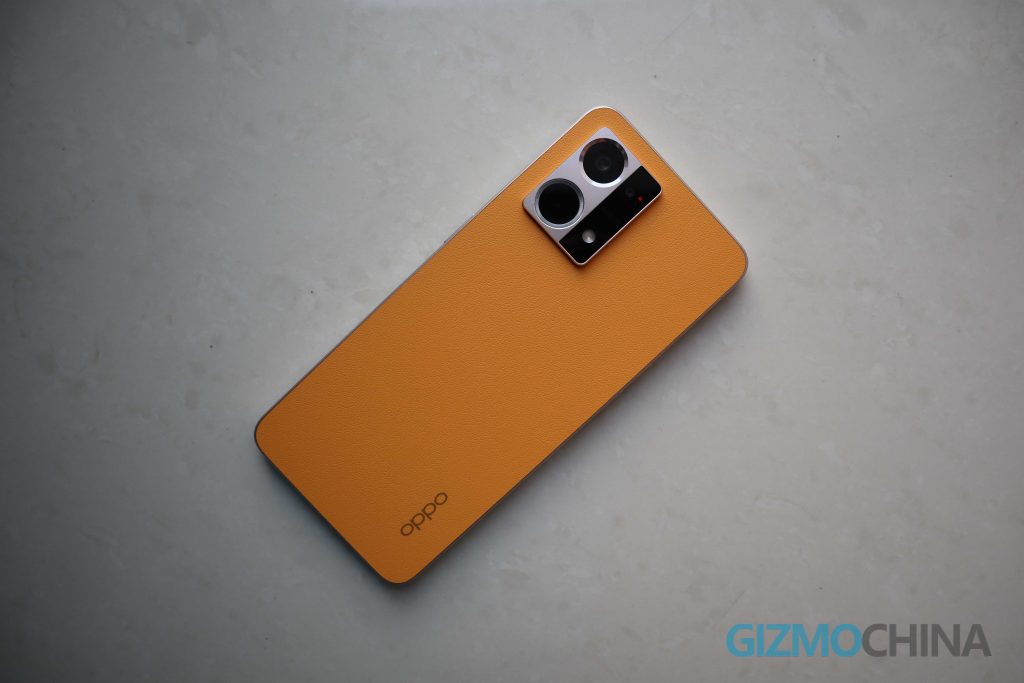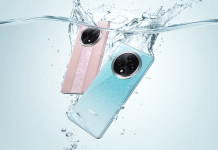After teasing for days, Oppo has officially launched the Oppo F21 Pro in India. The mid-range smartphone arrives with a revamped design and a new set of features. Just like its predecessors, it has a unique look and feel, but comes with mediocre specs. Is this phone any better than other devices in the segment? Should you buy it? I try to answer these questions in this review.
Before delving into the review, I would like to put a disclaimer that this review is based on my personal experience with an Oppo F21 Pro review sample loaned to me by Oppo India. The opinions stated here are mine alone, and the company had no early look or editorial input.
Oppo F21 Pro Review
Box Contents
- Oppo F21 Pro
- Transparent Case
- 33W SuperVOOC Charger
- USB Type-A to Type-C cable
- SIM Ejector Tool
- Documentation
Unlike previous models in the lineup, the device does not ship with a free pair of wired earphones.
Design and Build
The best thing about the Oppo F21 Pro is its design. The phone comes in two color options, namely Sunset Orange (fiberglass leather) and Cosmic Black (glass).
I have the former color variant. The back of this version is made of fiberglass leather. This artificial leather finish feels good in the hands and looks fascinating in the orange color. It’s one of a kind, as there aren’t many orange-colored smartphones in the market.
I didn’t use the case included in the box at all. Clearly, the handset wants to be used naked. During my week of usage, the leather back did not accumulate any noticeable dirt.
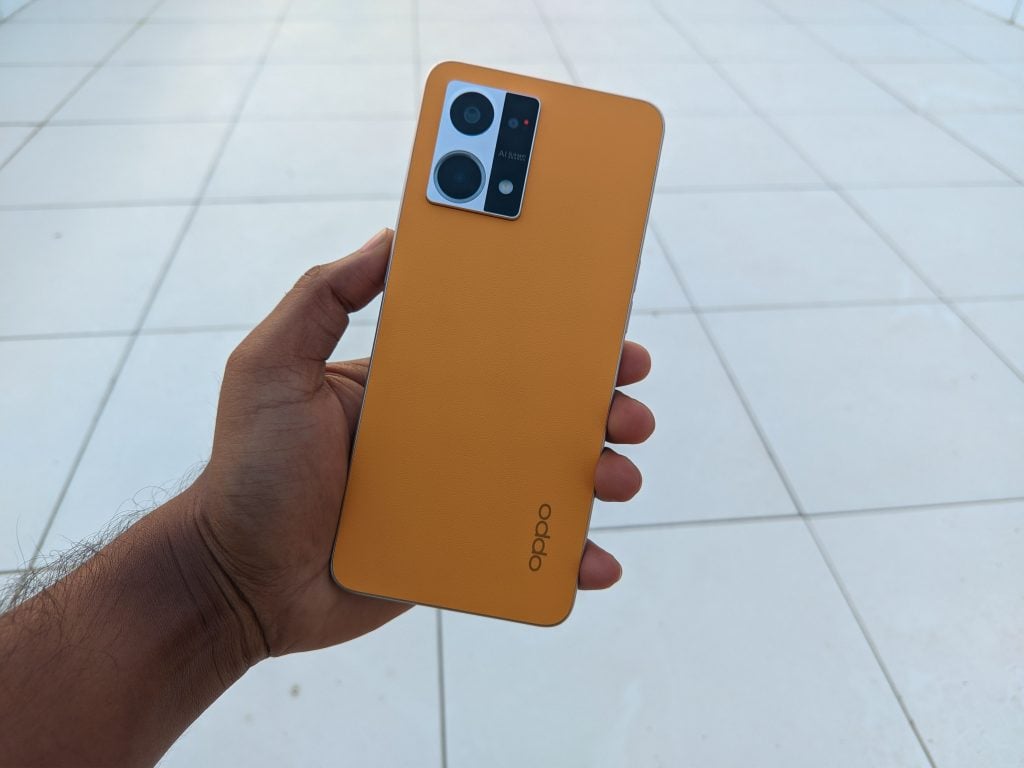
Another notable thing about the phone’s design is its camera island. It mimics a camcorder with a dual-tone finish. Apart from an LED flashlight, there’s also an LED ring for notifications.
The flat frame of the handset is made of plastic, but it feels sturdy in the hands. The two sides of the frame are occupied by a tactile power key on the right and volume buttons, as well as the SIM card slot on the left.
The top only includes a secondary microphone hole. Whereas, the bottom houses a 3.5mm headphone jack, a primary microphone hole, a USB Type-C port, and a speaker grille.
As a whole, the smartphone measures only 7.54mm in thickness (excluding the camera bump) and weighs just 175 grams. Hence, it is very comfortable to hold for a long period of time.
Display and Sound
The Oppo F21 Pro sports a 6.43-inch AMOLED display with a punch-hole on the top left corner. The canvas has a resolution of 2400 x 1080 pixels with a 20:9 aspect ratio.
The screen supports up to 90Hz refresh rate and 180Hz touch sampling rate. The display performs well for the price. It gets sufficiently bright under direct sunlight.
However, it is worth noting that the panel could not run at 90Hz refresh rate at all times. This could be either due to the lower mid-range chipset or because of the software optimization. It is a known issue on phones with a similar configuration.
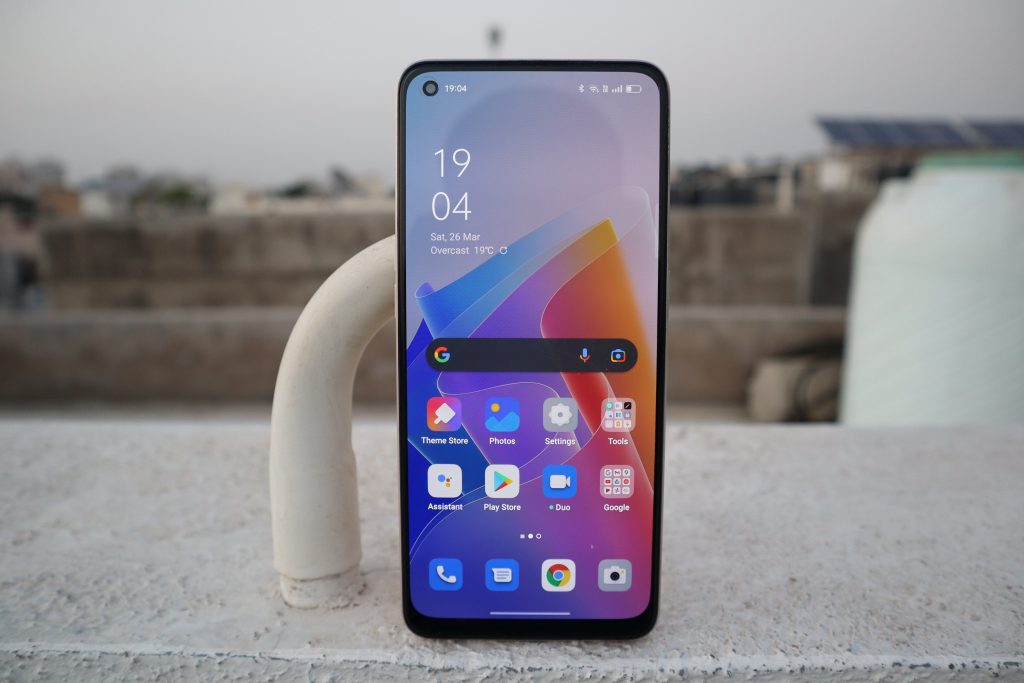
Interestingly, though the screen supports HDR10 and HLG standards, it cannot play HDR videos on YouTube. Also, the device lacks Widevine L1 certification, and therefore, it cannot play HD videos on popular streaming platforms like Netflix and Amazon Prime Video. But Oppo says these issues will not be present on the retail unit.
Unlike most smartphones in the segment, the Oppo F21 Pro does not come with dual stereo speakers. Though it has a single bottom-firing unit, it is loud enough for binge-watching. Anyway, the absence of stereo sound will always be felt if you are used to it, like me.
Then, there’s a headphone jack for those who don’t own or prefer wireless earphones. But as mentioned earlier, you won’t find a free pair of wired earphones in the box.
Hardware and Software
The Oppo F21 Pro is run by a Qualcomm Snapdragon 680 SoC. The chipset is paired with 8GB LPDDR4x RAM and 128GB UFS 2.2 storage.
The handset also has support for up to 5GB of virtual RAM. By default, it ships with the 3GB virtual RAM option enabled. I did not make any changes to the value throughout my usage, as most users would.
On the software front, the device boots ColorOS 12.1 based on Android 12. The experience is the same as what you would find on Oppo smartphones with the same software, but only slower. This means you also get bloatware, but unfortunately, they are uninstallable.
Though the software tries to be responsive as possible, it is held down by the lower-end chip. That does not mean the phone is dead slow. It’s just not as fast as the competitors and Oppo’s own Reno 7 and Reno 6.
The handset performs well for day-to-day usage. It can hold multiple apps in memory, but not for a long period of time, which is expected from a similarly specced device. Just don’t expect a good gaming experience, as it is not built for it.
Camera
The Oppo F21 Pro comes equipped with a triple camera setup on the rear. The system consists of a 64MP OmniVision OV64B primary sensor, a 2MP Galaxycore GC02M1 sensor with a 15x microlens, and a 2MP Galaxycore GC02M1B depth sensor. Whereas, on the front, it features a 32MP Sony IMX709 RGBW sensor for selfies.
Out of the four cameras, only two of them are useful. The depth sensor is of no use like on any other smartphone. On the other hand, there’s not much to do with the microlens. One would get bored in a while and may forget that it even exists.
Talking about the primary camera first, it is the same sensor found on the expensive Oppo Reno 6 Pro 5G (review) and Oppo Reno 6 5G (review) last year. However, the software processing is quite different.
Those two Reno handsets couldn’t output the proper skin tones of human subjects. But the new F21 Pro comes close. I really like how it shows the color of dark skin. The device even does not make changes to irregularities like pimples. The output from the camera is almost the same as what you see in real life.
But the color accuracy is not great, and that’s fine because people love pictures that are appealing to their eyes. There’s no over-saturation as such, which is a good thing.
HDR or high dynamic range is good but just like the Renos I have tested earlier, the processing is sometimes too extreme when there’s more backlight. Hence, you get to see halo effects in such images.
In low light conditions, the pictures are grainy, as you would expect from a lower mid-range smartphone. The night mode does not help much either.
Coming to the selfie camera, though the device has good hardware, the processing is poor. I did not like using the front camera at all. The skin tones are way off the chart. But the other aspects are similar to that of the main camera. Additionally, both the front and rear cameras have a wider lens to accommodate more subjects.
As far as video recording is concerned, both the rear and front cameras are limited to 1080p at 30fps quality. The videos out of these two sensors are average at best. They are slow at focussing and there’s no stability. In low light, they are grainy, just like the photos. Anyway, the audio captured by the microphones is clear, but there’s no noticeable noise cancellation.
Miscellaneous
The handset is limited to 4G connectivity, which is fine as 5G networks are yet to go live in India. Even if the new generation network gets launched by the end of 2022 or early 2023, it won’t be widely available across the country.
Talking about what’s present, LTE mobile data works well as it should and so does mobile hotspot. There’s no issue with the audio from the headpiece, and the same can be said for the microphone quality. Similarly, Wi-Fi and Bluetooth work fine. I did not face any drops.
Finally, the LED ring light for the microscope camera can also be used for notifications, call alerts, charging indications, and even for game launches. Though it looks cool, I didn’t find any use for it as I usually place my phone backside down.
Battery and Charging
The Oppo F21 Pro gets its juice from a 4,500mAh battery. On a full charge, it can easily last a day and some more. Because the Snapdragon 680 chip present inside the device is energy-efficient as it uses a 6nm process.
At the same time, the battery can be recharged in less than 90 minutes with the included 33W SuperVOOC fast charger. It takes around 1 hour and 20 minutes to fill from 10% to 100%.
It is definitely not the fastest charging handset in the segment. But that’s fine for most people, unless you are one of those who are always in a hurry.
Verdict
Just like most Oppo smartphones, the Oppo F21 Pro is not meant for everyone. It is average in all categories, except for the design. The phone’s look and in-hand feel need to be experienced firsthand to appreciate them.
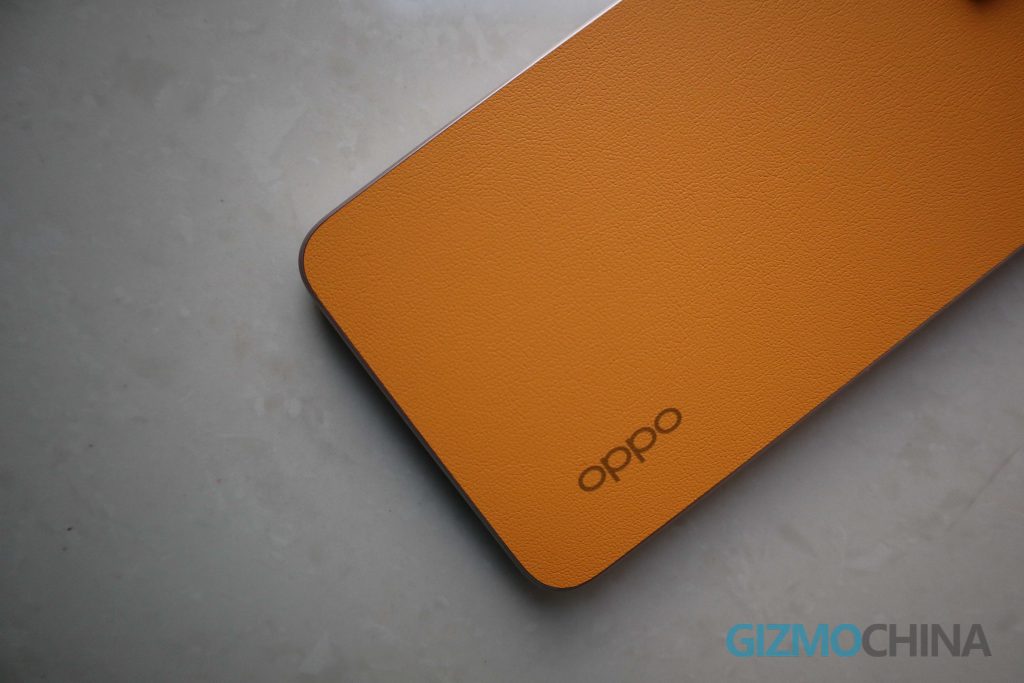
There are consumers for whom design comes first. For them, this could be the best purchase.
Whereas, for others, if you are fine with the shortcomings mentioned above, there’s nothing wrong in choosing this handset over competitors.
Alternately, the Oppo F21 Pro is probably one of the best options for those looking for a secondary smartphone in this price segment. Mostly because it is thin and light and offers a good battery life, in addition to its looks being a head turner.
RELATED:
- OPPO Reno7 Pro Review: Shiny New Flat Design, Solid Software, & Capable Cameras
- OnePlus Nord CE 2 5G Review: Fancier Design but no Major Hardware Upgrades
- OPPO Reno7 5G Review: Good Looks Alone Don’t Make a Worthy Upgrade
- ColorOS 12 Review: A Step In The Right Direction

